We travel to Gohoro Station, a tiny, remote station between tunnels in the mountains of Hokkaido
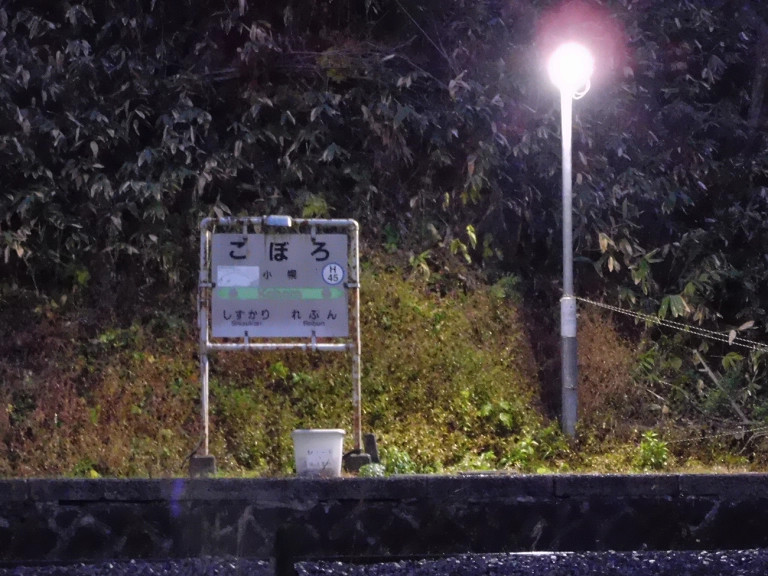
A mystical, hidden place only serviced by two trains per day: secret gem, or portal to another world?
If you’ve been on a countryside train in Japan, you’ve probably seen tiny wayside stations made more of trees than cement, with barren platforms that a lot of trains except the most local zip right through. Or maybe not; if you blink, you’d probably miss them.
Our Japanese-language reporter Seiji Nakazawa spotted one while traveling to the city of Oshamambe on the Hokuto, a limited-express train that runs between Sapporo and Otaru in the northern prefecture of Hokkaido. As he was gazing out the window, watching the scenery go by, he caught a glimpse of a strange station that flashed past him.
It wasn’t just that it was a small, empty station that gave Seiji a sense of discomfort. It was that the station lay between two tunnels in a mountainous district. While looking out the window, Seiji was surprised when they blasted out of a tunnel, through a station, and then back into another tunnel. The only thing Seiji had time to see was a beat-up signboard, which almost had him doubting what he’d seen.
When he arrived at Oshamambe and investigated, he learned that there is a fairly famous secluded station on the JR Muroran Line called Koboro Station.
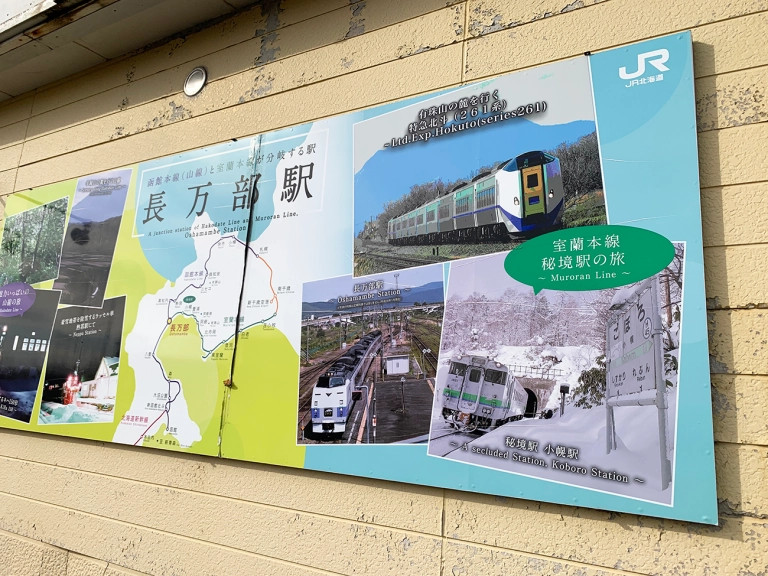
But as Seiji observed, the station is surrounded by mountains, with a cliff face to its back and an ocean to its front, so the place was inaccessible by car or on foot. Which means the only way to go…
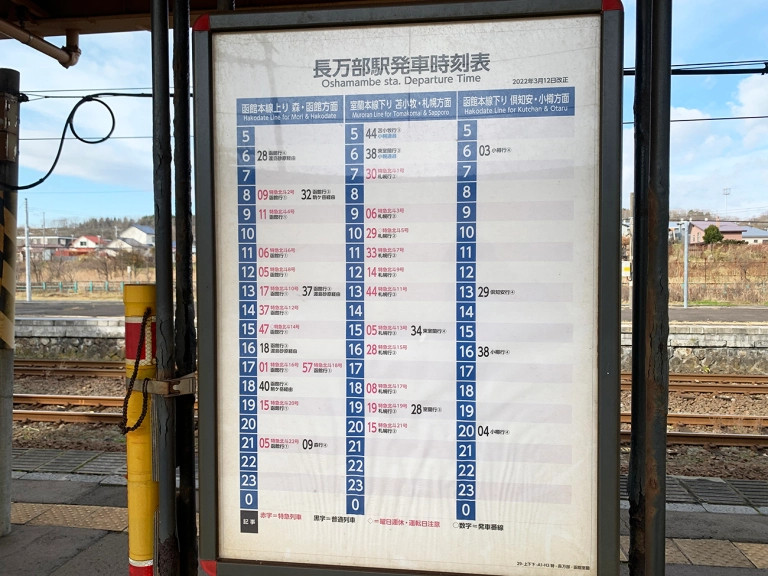
…was by a local train that only departs from Oshamambe twice a day. While there are actually four trains that leave from Oshamambe Station and head towards Gohoro, the 5:44 a.m. and 6:38 a.m. trains don’t stop there and only pass through it. The only trains that stop at Koboro leave at 3:34 p.m. and 7:28 p.m.
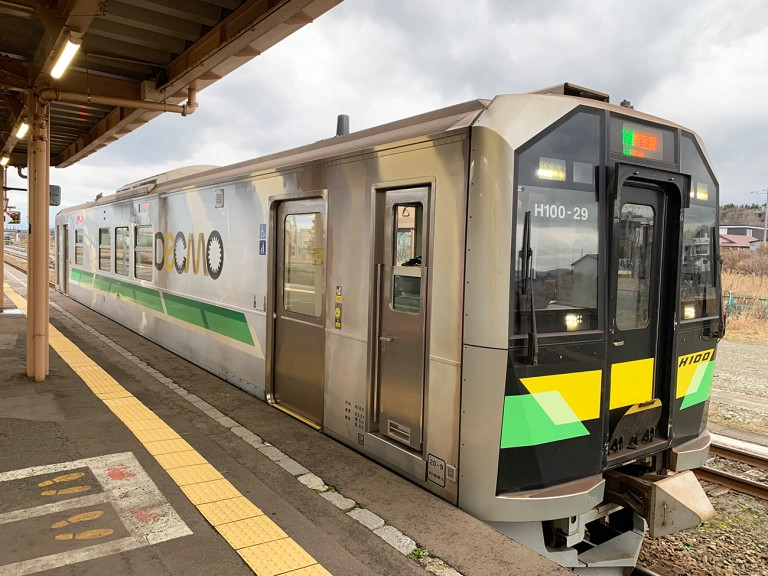
Taking the 7:28 p.m. train meant arriving at night, which wouldn’t be great for taking photos, so Seiji had no choice but to take the 3:34 p.m. train.
▼ The fare, by the way, was 880 yen (US$6.44) one-way.
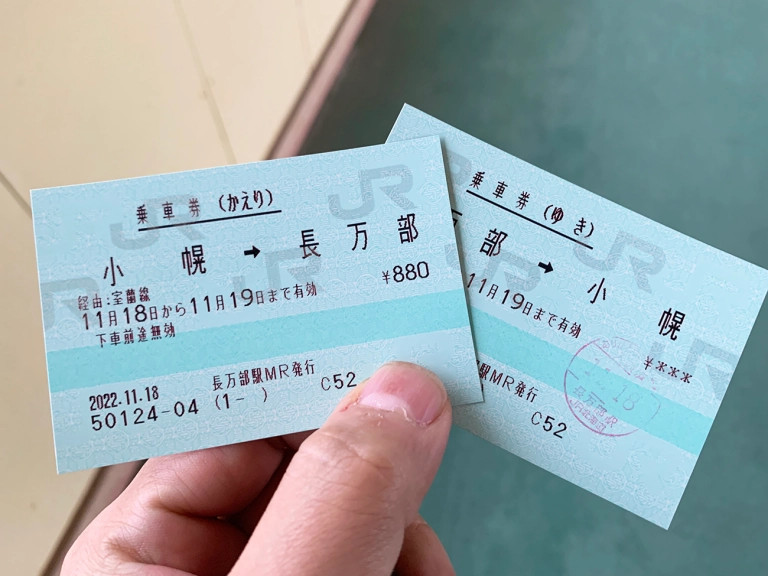
Seiji arrived at 3:50 p.m.. The fact that it was only three stations away from Oshamambe Station was the place’s only saving grace, considering how late Seiji had arrived. In the middle of the mountains, 3:50 p.m. was just about approaching dusk.
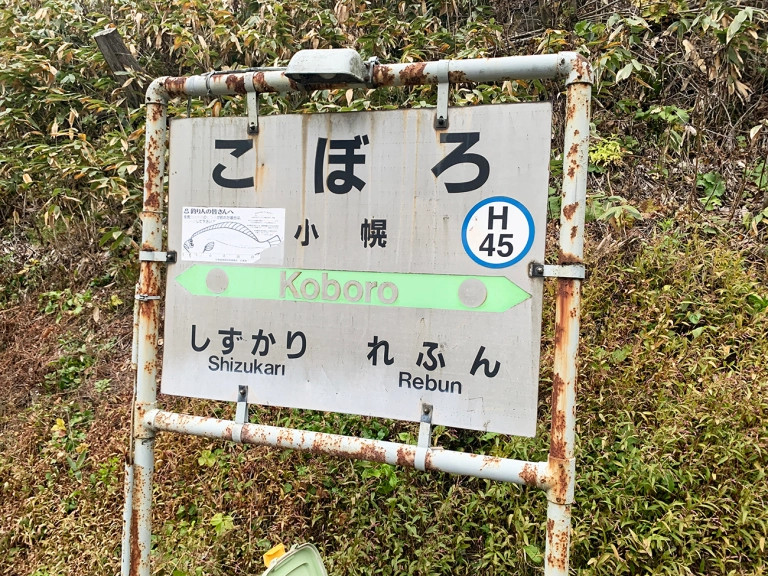
Seiji was surprised to see five people get on the train he’d just gotten off at Koboro. After briefly wondering how they got there before him, he guessed that trains that come from the opposite direction probably leave earlier, so it might be easier to travel to Koboro from Muroran.
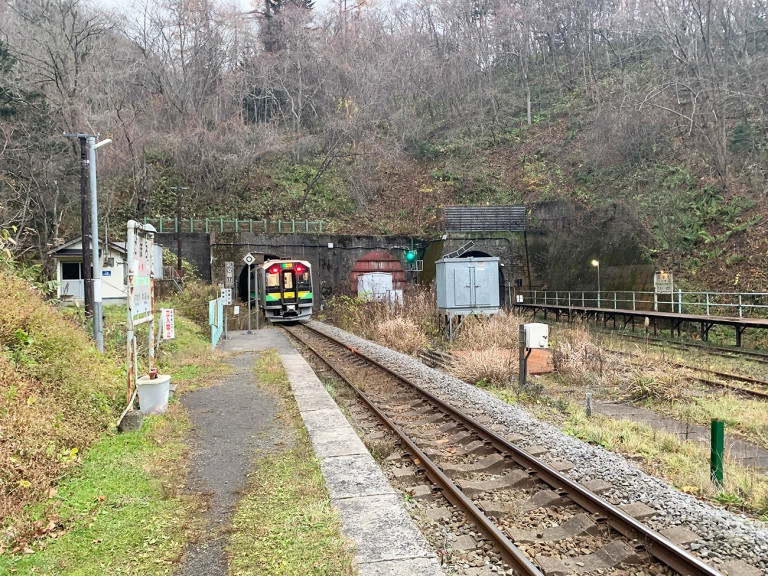
After he got his bearings, Seiji glanced around to see that the station really was sandwiched between two tunnel entrances, like a puzzle piece slotted into the perfect place. The platform was very narrow and felt more like a passing lane than an actual platform.
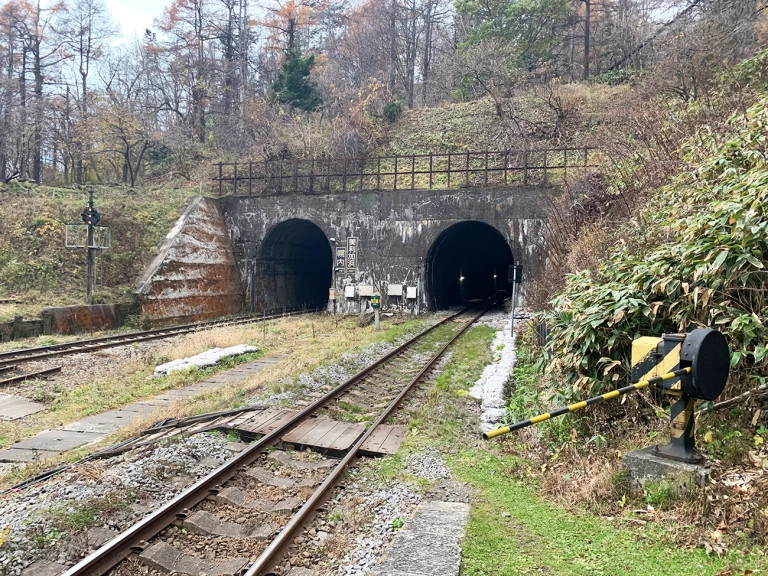
With the simple construction, the two tunnel entrances on either side, and the fact that one side of the station was backed up against a steep mountain face, Seiji felt rather trapped, like the two tunnels and the mountain were the sides of a box.
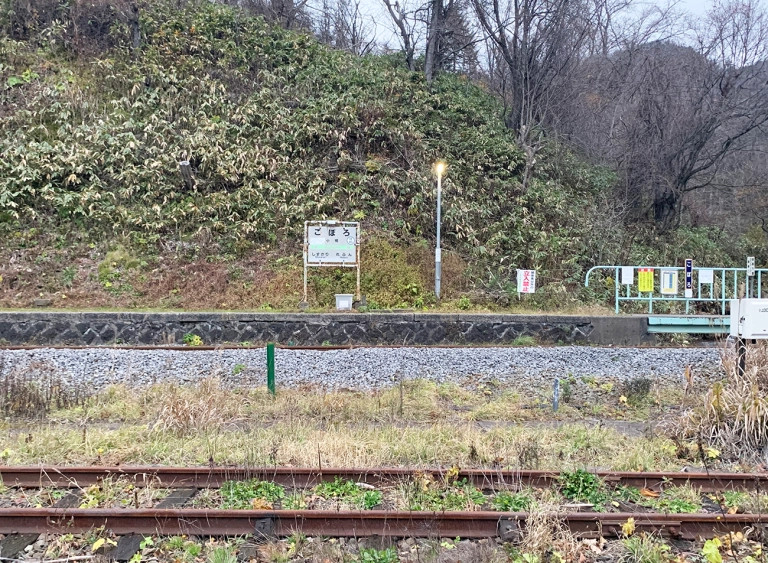
The open side of the box was on the same side as the platform for Oshamambe, a little opening between trees where there was a toilet and…some kind of station building?
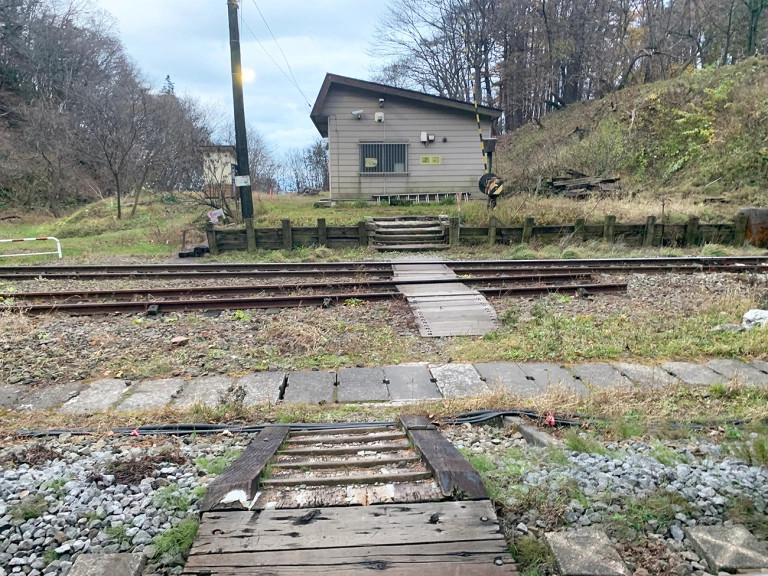
That was about it when it came to the actual station. Seiji didn’t think it was especially scenic or pretty but he did find a plastic case on the platform for Muroran which contained 12 station guestbooks. There was also a doujinshi, or fan manga, in there. After traveling to Koboro and seeing how difficult it was to get there for himself, Seiji really felt the love borne by the train otaku who came all that way to leave their messages in the guest books.
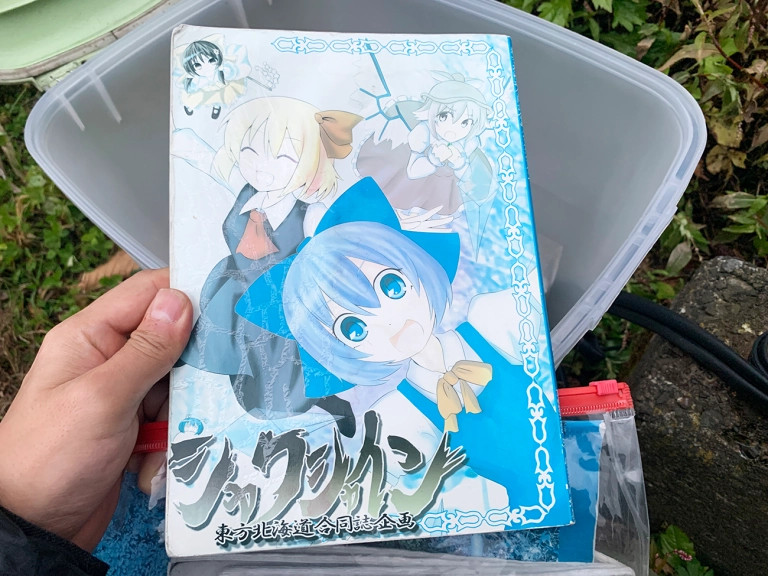
The next train returning to Oshamambe was at 5:34, so Seiji had about an hour and a half to explore. He took a look around the area…
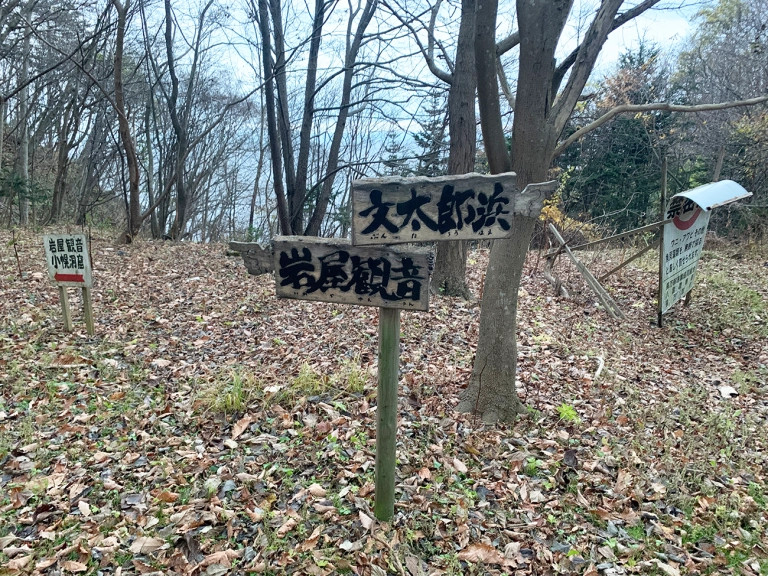
And found two arrow signs pointing in opposite directions, one for “Iwaya Kannon”, a temple, and one for “Buntaro Beach.” Perhaps these were places with nice views? Seiji supposed he probably only had time to see one, so he headed for Iwaya Kannon.

He ended up going on a serious mountain hike along a tiny path only wide enough for one person, with a sheer cliff drop on one side. Seiji would occasionally get a glimpse of the ocean that lay distant down at the bottom of the cliff, which made his legs shake. If he made a single misstep, he would fall to his death. It was truly terrifying.
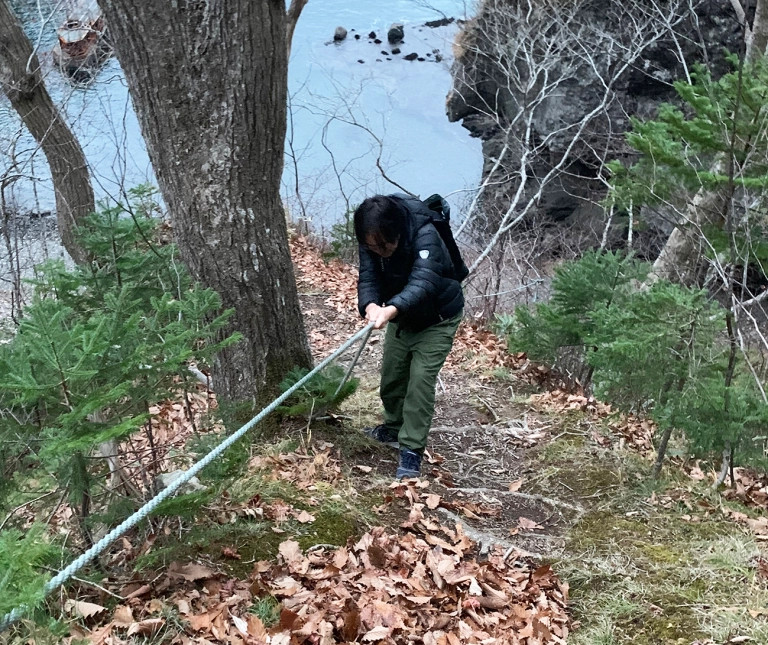
Having had his fill of treacherous, remote mountain paths leading to hidden sightseeing spots, he was relieved when he finally made it to Iwaya Kannon. It was near a little sandy beach sandwiched between a barren mountain face and a cliff wall.
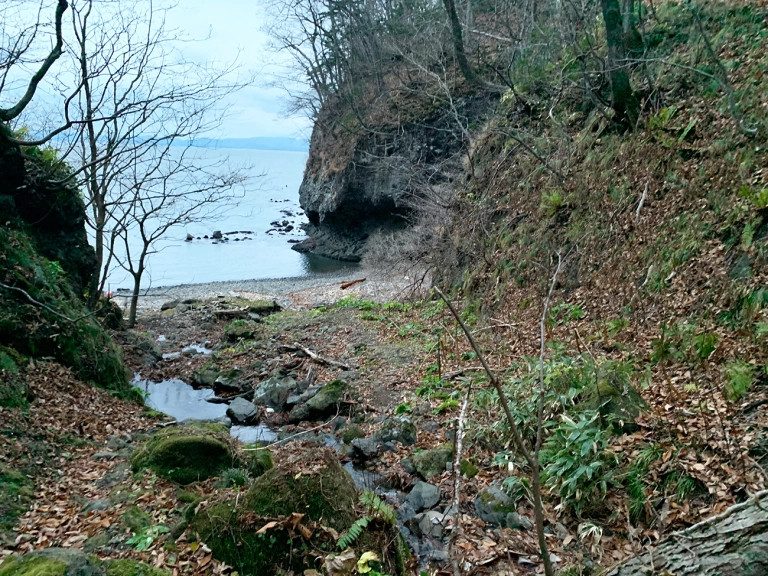
In the mountain face was a little cave where the Iwaya Kannon statues were. Apparently, they were carved and hidden here by the Buddhist monk Enku in 1666.
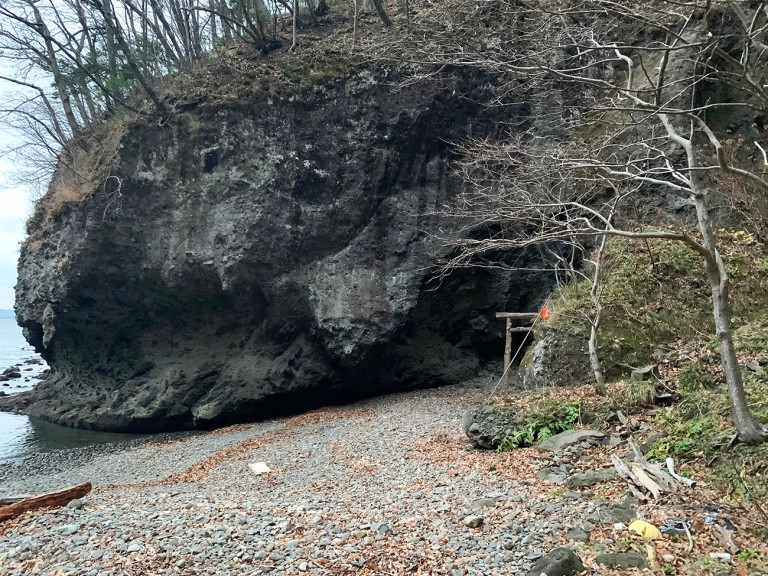
1666 would put Japan right at the beginning of the Edo period, the age of the shogun. That was long before the development of Hokkaido, so the fact that someone came here, to the remotest of backcountries, in 17th century Japan and placed Kannon statues in a cave is impressive in a “glad it wasn’t me” kind of way.
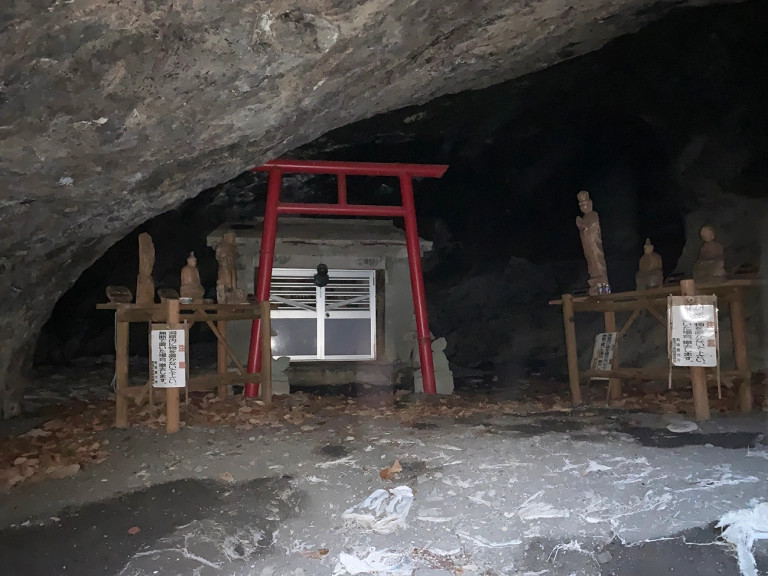
Honestly, the sheer fact that someone managed to come here during the Edo period is impressive. Just getting here in the age of modern transportation is difficult enough–imagine walking to a place like this!
Along those lines, Seiji began to wonder, why build a station in a place like this anyway? He couldn’t stop thinking about it, so he asked at the Toyoura Town Hall, which manages Koboro Station.
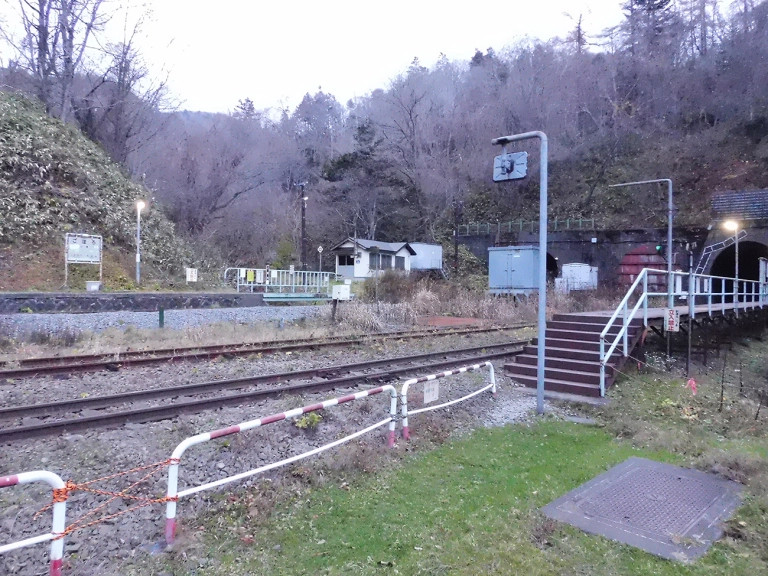
Toyoura Town Hall: “Koboro Station was apparently once a signal station.”
Seiji: “What’s a “signal station”?”
Toyoura Town Hall: “A place built to facilitate train traffic. At the time, steam trains, which belched smoke, couldn’t stop in tunnels, so this was a safe place for them to stop while another was coming through. Repair laborers used to use it too. According to documents found, the signal station was built in 1943, but because some fishermen lived nearby, they elevated it to a station.”
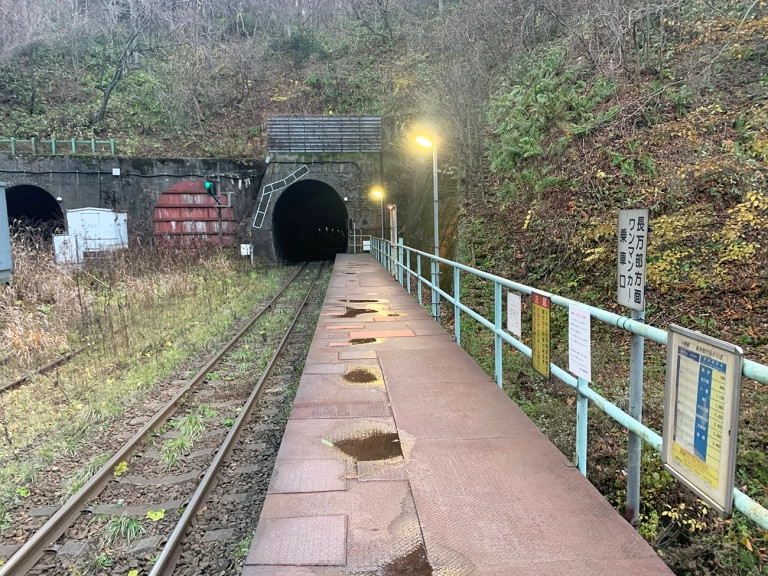
Seiji thought that was very interesting information. He did see the remains of a bridge near the Iwaya Kannon, which may have been used by the fishermen at the time.
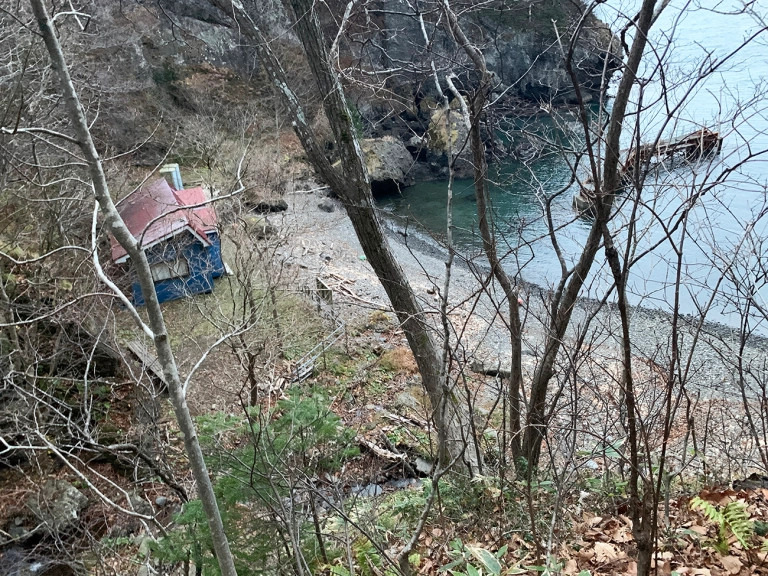
Still, he couldn’t get over how extremely remote the place was. By the time Seiji returned to the station from Iwaya Kannon, the sun had completely sunk behind the mountain, and Gohoro Station had become a dim pinprick of light in the darkness. The “Koboro” sign under the light of the single lamppost made the place seem even more mystical.
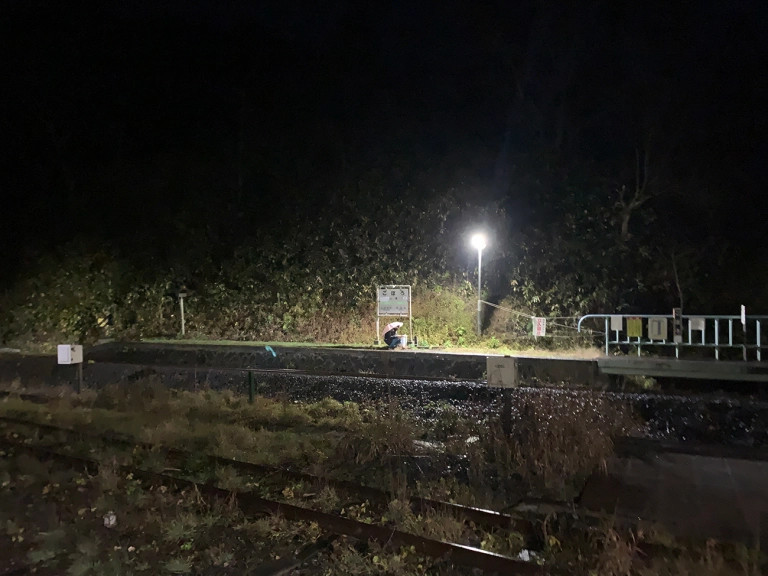
By the way, it goes without saying that there was pretty much no phone service anywhere around there. Seiji could sometimes get one bar, but it was in and out. He could hardly get Softbank’s automatic home page to load, never mind any apps like Twitter. The wait for the train was long and boring.
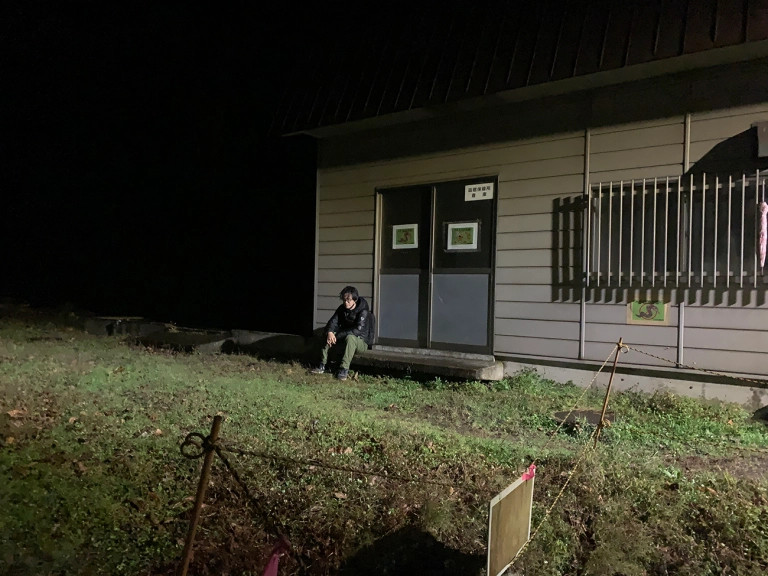
Soon it began to drizzle, and Seiji thought he heard the sounds of festival music and drums coming from nearby. He glanced at his watch–he had some time. “Maybe I’ll just go have a look…” he thought.
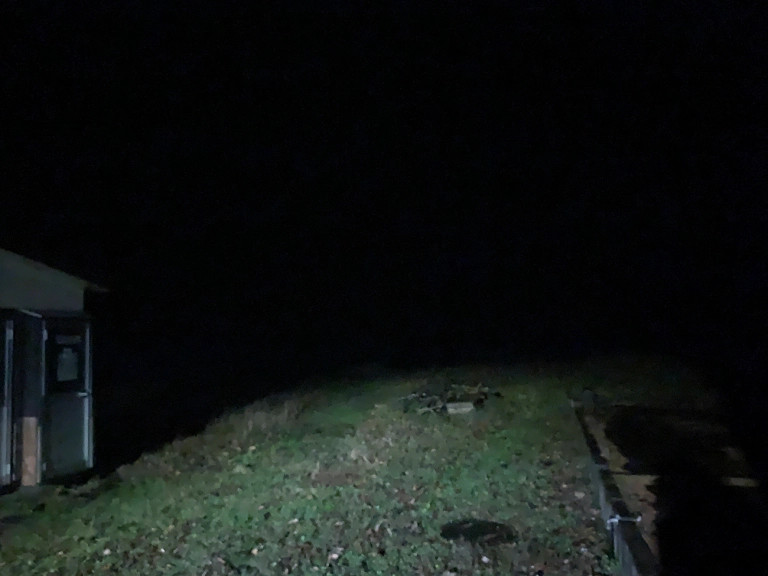
And we never saw him again.
Just kidding! He wrote this from his desk at the office. Didn’t he? Hey…has anyone seen Seiji?
Images © SoraNews24
● Want to hear about SoraNews24’s latest articles as soon as they’re published? Follow us on Facebook and Twitter!
Credit:

0 comments:
Post a Comment